Introduction
Events such the Great East Japan Earthquake or 3.11 force us to rethink our ways of life. This triple disaster—the earthquake off the Pacific coast of Tohoku and the tsunami, combined with the disaster at Tokyo Electric Power Company’s Fukushima Daiichi Nuclear Power Plant—caused tremendous damage to the Great Eastern region, particularly the northeastern region called Tohoku.Footnote 1 As of July 2023, the recovery process is ongoing, and many residents from the region remain affected in some way. Since my initial engagement in Miyagi Prefecture from May to August 2011 (Nakamura Reference Nakamura2012), my project on the aftermath of 3.11 has involved working with residents, including museum professionals, in the disaster areas in Tohoku, as well as various volunteer groups and artists across Japan and beyond.
Through the connections and relationships created because of 3.11, I started thinking about the role of creativity in the aftermath of such disasters. Even in the midst of disasters, I learnt that people have “the desire to create and express themselves—as does nature” (Nakamura Reference Nakamura2021: 6; see Huss et al. Reference Huss, Kaufman, Avgar and Shuker2016). As a contribution to a special issue focusing on relational creativity in Japan, this article asks how we can understand the way a social role can be addressed through creativity in the aftermath of such disasters. How might creative works assist recovery processes and the preserving of memories? While there are various aspects of disaster recovery—whether economic, political, or social—this article situates an ongoing project called the “Lost Homes” Scale Model Restoration Project (hereafter the Lost Homes project) in the context of disaster recovery to consider the role of relational creativity. The Lost Homes project, initiated and led by architect and educator Tsukihashi Osamu of Kobe University and his students, is a collaborative community project with residents in the disaster region as well as students and professors of architecture and architects across Japan. The project creates scale models to represent the towns and villages greatly impacted by 3.11. One of their scale models, a model of Ōfunato City in Iwate Prefecture created in 2013, was featured at the exhibition entitled A Future for Memory: Art and Life after the Great East Japan Earthquake, which I curated. The exhibition was held in 2021 during the tenth anniversary of 3.11 at the Museum of Anthropology (MOA) at the University of British Columbia (UBC), located in Vancouver (Fig. 1).Footnote 2 If we consider relational creativity as creative practices that take place within a range of interpersonal relationships or collaborations, the Lost Homes project and my exhibition provoke further connections with others who encounter their models. As I am implicated in the process of using their models, I take a stance of letting my collaborators and/or their creative work speak for themselves, rather than inserting my own view so much in this paper. My research would be impossible without the practices of these collaborators, and I acknowledge the importance of presenting their unmediated voices. Their creative works are on equal footing with my scholarship.

Figure 1: The scale model of Ōfunato City, Iwate Prefecture, 2013 at A Future for Memory at MOA, 2021. Collection of General Incorporated Association Tonarino, Rikuzentakata City, Iwate Prefecture. Photo by Alina Ilyasova. Courtesy of the Museum of Anthropology at UBC, Vancouver.
I first introduce the Lost Homes project, which will be followed by various ways in which the project has enabled the preservation of memory, community building, and public and collaborative events in the aftermath of 3.11. The next section discusses postdisaster creativity by examining a series of exhibitions entitled Making as Living by the WA WA Project in the context of 3.11 and the exhibitions at the Japanese pavilion at the Venice Biennale of Architecture in 1996 and 2012. The Venice exhibits focused on the role of architecture in the aftermath of a major disaster—the 1995 Hanshin-Awaji (Kobe) Earthquake and the 2011 Great East Japan Earthquake, respectively. By studying these cases, the article will present the affective dimensions of creative disaster responses and how relationality plays a role in these endeavors.
The “Lost Homes” Scale Model Restoration Project
The idea for the “Lost Homes” Scale Model Restoration Project emerged from a discussion between Tsukihashi and his students 2 weeks after the disaster on March 25, 2011. After spending days watching numerous types of footage of the tsunami and its destruction along the Pacific coast in Tohoku on television and on the internet, they realized that they hardly knew anything about the towns and villages affected by the disaster. What would life be like in these places if the tsunami had not mercilessly swallowed them? They asked themselves what they could do to get involved with recovery support. As they work in architectural education and design, it was perhaps not surprising that they proposed to create diorama scale models to represent the landscape and the richness of the towns and villages in the disaster areas (Tsukihashi Reference Tsukihashi and Nakamura2021a). They proposed to undertake the following four tasks: (1) to create pixelmaps of the areas inundated by the tsunami and collect information about damages; (2) to discuss and gather what kind of information would be required to create scale models; (3) to determine the scale and size of the restoration scale models; and (4) to conduct interviews to ascertain which communities in the disaster region would be willing to accept their project (Tsukihashi Reference Tsukihashi2021b). This project was supported by Archi+Aid (アーキエイド)—a reconstruction support network of over 300 architects and architecture educators, initiated by those based at Tohoku University in Sendai City, Miyagi Prefecture soon after the disaster. Tsukihashi was a member of this network. Through the network, many participated in the Lost Homes project. The Hometown Memory Lab, a general incorporated association (一般社団法人ふるさとの記憶ラボ), has managed the storage and donation of the models since 2015.
The project creates predisaster white scale models at 1:500 of the towns and villages heavily affected by the earthquake and tsunami and/or nuclear radiation, using topographical maps issued by the Geospatial Information Authority of Japan and predisaster aerial photographs as a reference. One model, which they call “a pixel,” is 1 m2 and represents an area of 500 m2. Architecture students create white models of the inundated areas with styrene foams, and, if the subject area is vast, they extend the model by connecting pixels. They document memories and stories of places by listening to local residents and then plotting the model with colors, words, and miniature objects (Fig. 2). They carefully considered what scale would work best. A model at the 1:2500 scale would represent the shape and structure of a location, but it would be hard to discern individual houses or other townscape elements. A model at the 1:200 scale would show the details of houses, but would mask the connection between them and the other groups of houses and other environmental and structural features. They figured out that a model at the 1:500 scale would represent the shape of land, streets, trees, and houses clearly enough, but without minute details, and enable a bird’s-eye view while also offering a pedestrian perspective (Tsukihashi Reference Tsukihashi2012; Tsukihashi Reference Tsukihashi and Nakamura2021a).
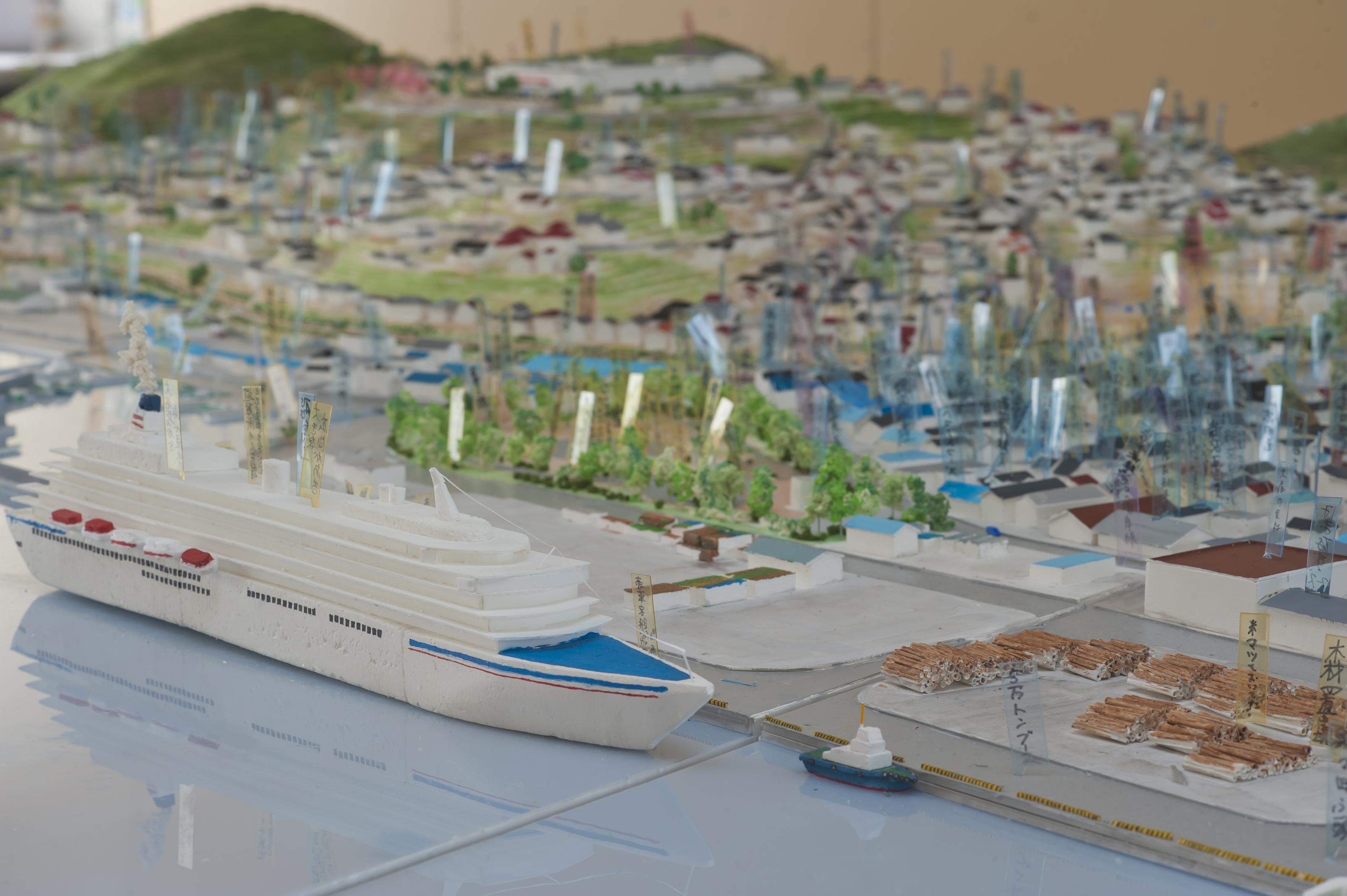
Figure 2: Detail of the scale model of Ōfunato City, Iwate Prefecture, 2013. Photo: Fujii Tatsuya. Courtesy of the Lost Homes Project.
Their first scale model, which acted as a prototype, was created during April and May 2011 and represented the area around the Minami Kesennuma Station in Kesennuma City, Miyagi Prefecture (Fig. 3). Tsukihashi had lived in Sendai for 6.5 years while teaching at Tohoku Institute of Technology prior to moving to Kobe in 2009. He was actually in Kesennuma on March 6, 2011 as he was working with Takahashi Kōgyō—a metal processing company based there—for his project, which was a renewal of Blue Ocean Station (BOS), the large screen at the Sannomiya Center Gai Shopping Arcade (三宮センター街) in Kobe City (Tsukihashi Reference Tsukihashi2021b). The screen was first installed in 2005 as a symbol of recovery on the tenth anniversary of the 1995 Great Hanshin Awaji (Kobe) Earthquake. For the renewal of the screen, the arcade shade needed to be extended. All the parts made in Kesennuma—originally intended to be installed on March 24, 2011—were swept away by the 2011 tsunami. The Sannomiya Center Gai Shopping Arcade Association decided to wait until they were ready to make the parts again, and the new arcade shade was finally installed on March 23, 2013, 2 years after the disaster (Architects Teehouse 2013).
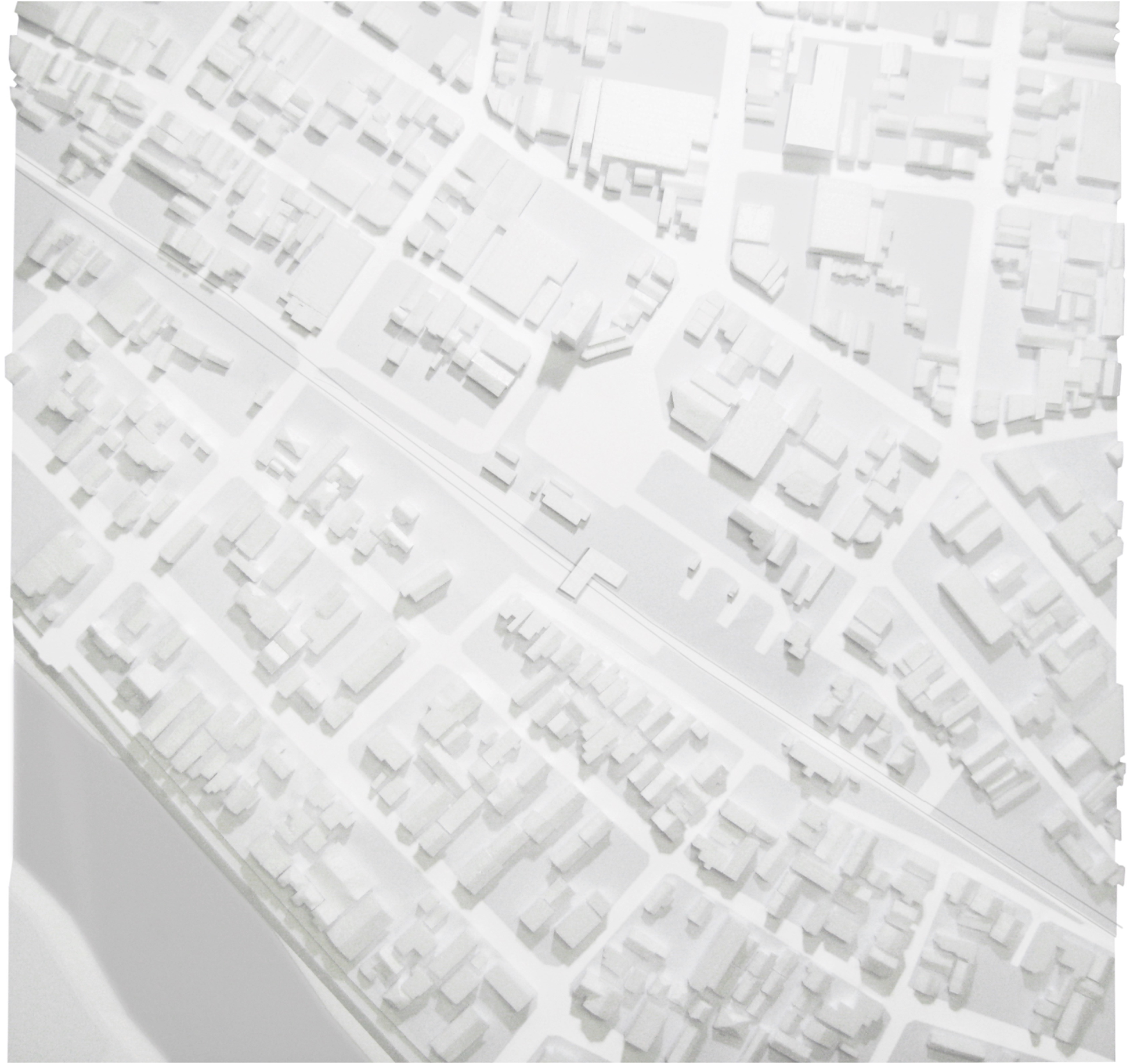
Figure 3: The white scale model of the area around the Minami Kesennuma Station in Kesennuma City, Miyagi Prefecture, 2011. Courtesy of the Lost Homes Project.
Because of this relationship, Tsukihashi went back to Kesennuma in April to deliver some aid to the staff at the company and had an opportunity to talk to the staff living in evacuation centers. Together they discussed what they could do for the future of the disaster region and for the children who would grow up there. The ideas for the scale model restoration project resonated with their sentiments; by recreating the lost landscape via a scale model, the project not only would be able to preserve memories of their town but also would pass down such memories to future generations of children. While planning the project during the first 3 months since March 2011, Tsukihashi and project members visited Kesennuma and discussed how best to organize workshops and interviews with community members. They also came up with a concept for the Kesennuma Mirai Project, a volunteer recovery network in Kesennuma at that time (Tsukihashi Reference Tsukihashi2021b).
The Lost Homes project members are acutely aware of the fact that a scale model representing a particular location would have a considerable emotional impact on local residents, especially if it represented their affected hometown. Even within the same location, the damages sustained are varied, and the way residents face the disaster and encounter the model also differs from one person to another. There would be some residents who were not ready to recall their town prior to the disaster or to see a model of their devastated town. At the same time, if their experience was not shared and talked about, it would be difficult to preserve memories and to reflect and utilize their experience for the recovery process. For this reason, the project members worked hard to provide an accessible and comfortable environment to show their models to local residents in the disaster region and to make the project collaborative (Tsukihashi Reference Tsukihashi2012).
Town of memory workshops
The most important aspect of this project is, therefore, organizing what the group calls “Town of Memory” workshops with communities in the disaster-ravaged region (Tsukihashi Reference Tsukihashi2012; Tsukihashi et al. Reference Tsukihashi, Tomobuchi and Akita2013; Isomura et al. Reference Isomura, Tsukihashi and Tomobuchi2016; Isomura et al. Reference Isomura, Tomobuchi and Tsukihashi2019; Tajima et al. Reference Tajima, Isomura, Tomobuchi and Tsukihashi2022; Tsukihashi et al. Reference Tsukihashi, Taguchi, Isomura and Tomobuchi2022) (Fig. 4). A group of students bring a white scale model that they have made to the represented area and stay there for about a week. They document stories and memories of the area by listening to local residents who gather around the model. They color the model in collaboration with residents (Fig. 5) and create and attach miniature objects and jot down memories on small “memory flags” and plot them. The first 10 workshops were held in Kesennuma between June 28 and October 2, 2011. The very first pre-workshop was organized as an experiment at the Kesennuma City Hall on June 28. As soon as they displayed three white scale models in the lobby, local residents who happened to be there for other reasons started to gather around the models, and it was actually the residents themselves who started painting the models spontaneously. Their prompt response to the models, by coloring them, became an integral part of later workshops (Tsukihashi Reference Tsukihashi2012).
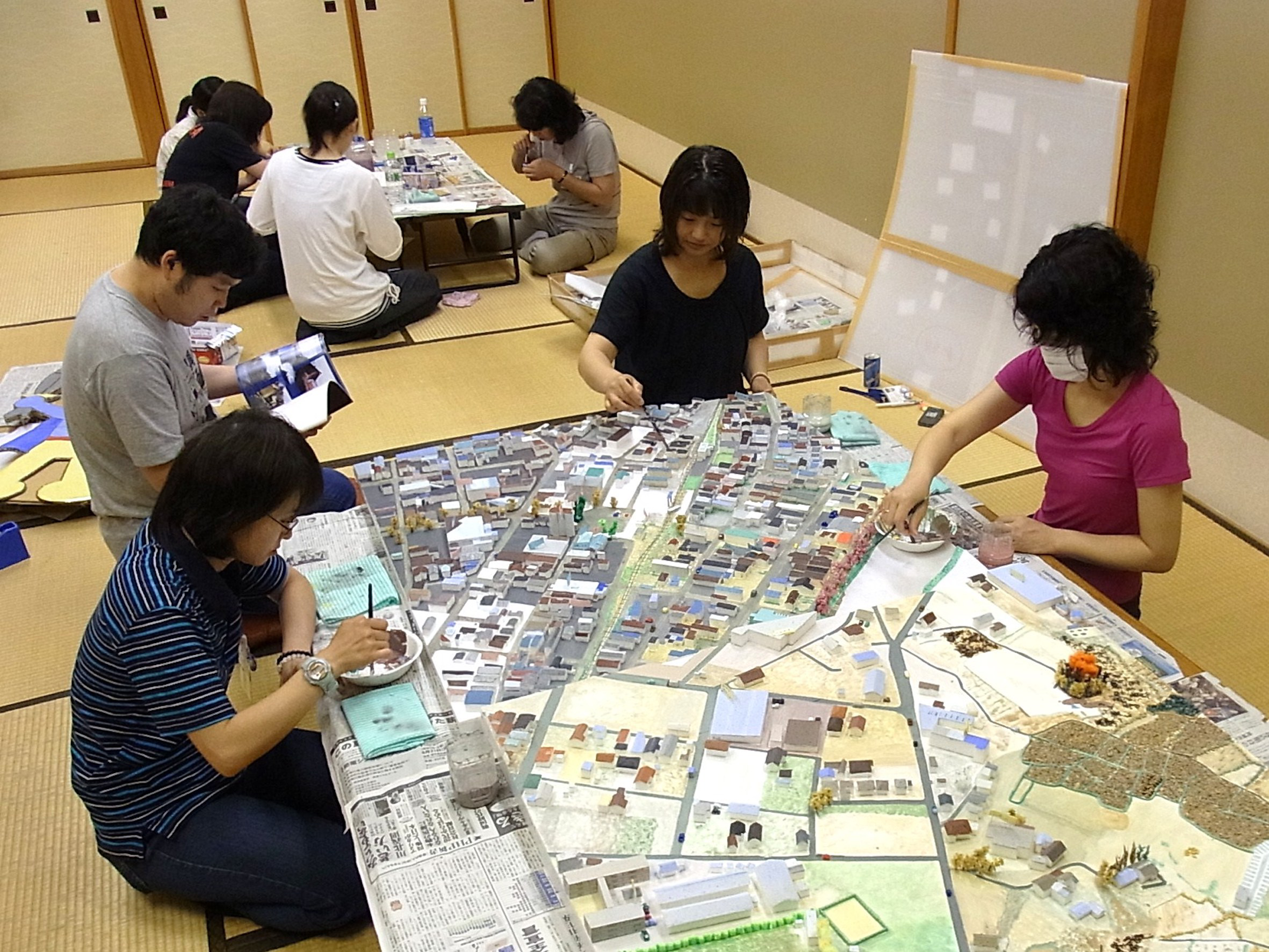
Figure 4: The “Town of Memory” workshop in Kesennuma City, Miyagi Prefecture, 2011. Courtesy of the Lost Homes Project.
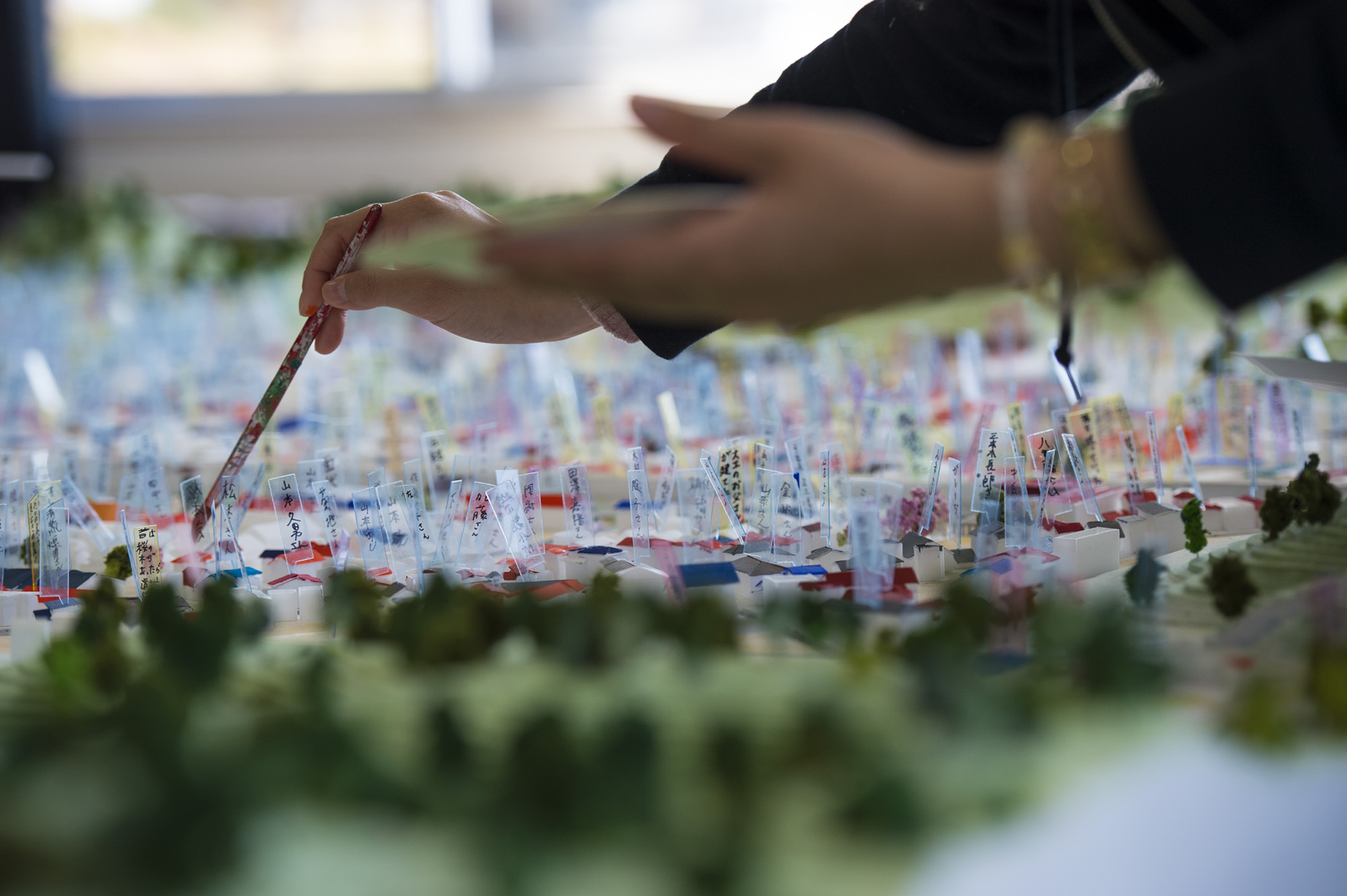
Figure 5: Painting a scale model at the “Town of Memory” workshop in Tarō District, Miyako City, Iwate Prefecture. April 2013. Photo: Jason Halayko. Courtesy of the Lost Homes Project.
While they colored the models, the students started making and plotting memory flags, later adding townscape details that you cannot learn from maps. For instance, they learnt that the streets along Ōkawa River are full of cherry blossoms during spring, making this a popular destination for local residents. The students made miniature objects representing such details. The project member and representative director of the Hometown Memory Lab Isomura Kazuki tells us that most often, “residents unveil memories that are ordinary yet vital—‘I would hang out with my friends here’ or ‘I used to play here as a child,’ or ‘this is where my husband and I would go on dates,’” and he hopes their work helps pass on these everyday, ordinary memories and images to future generations (Conversation with Isomura, May 5, Reference Isomura and Kōjō2021). They also keep the booklets and online archives of what they call tsubuyaki, or mutterings, by local residents, containing a lot of memories that cannot all be included on the scale models.
“Memory flags” (Fig. 6) list not only the names of places but also, according to Tsukihashi, “the embodied memories and history of those places and the events that occurred at the time of the disaster, allowing us to read various testimonies across time. The miniature objects attached to the model representing trees or festivals embody all the seasons local residents once loved. When we observe a model with thousands of memory flags and recreated cherry blossom trees and lively summer festivals, we realize that the towns and villages where people have lived for generations are not only made up of physical elements of landscape such as mountains, oceans, buildings, and roads but also of memories and stories. Towns are made of memories” (Tsukihashi Reference Tsukihashi and Nakamura2021a: 18).
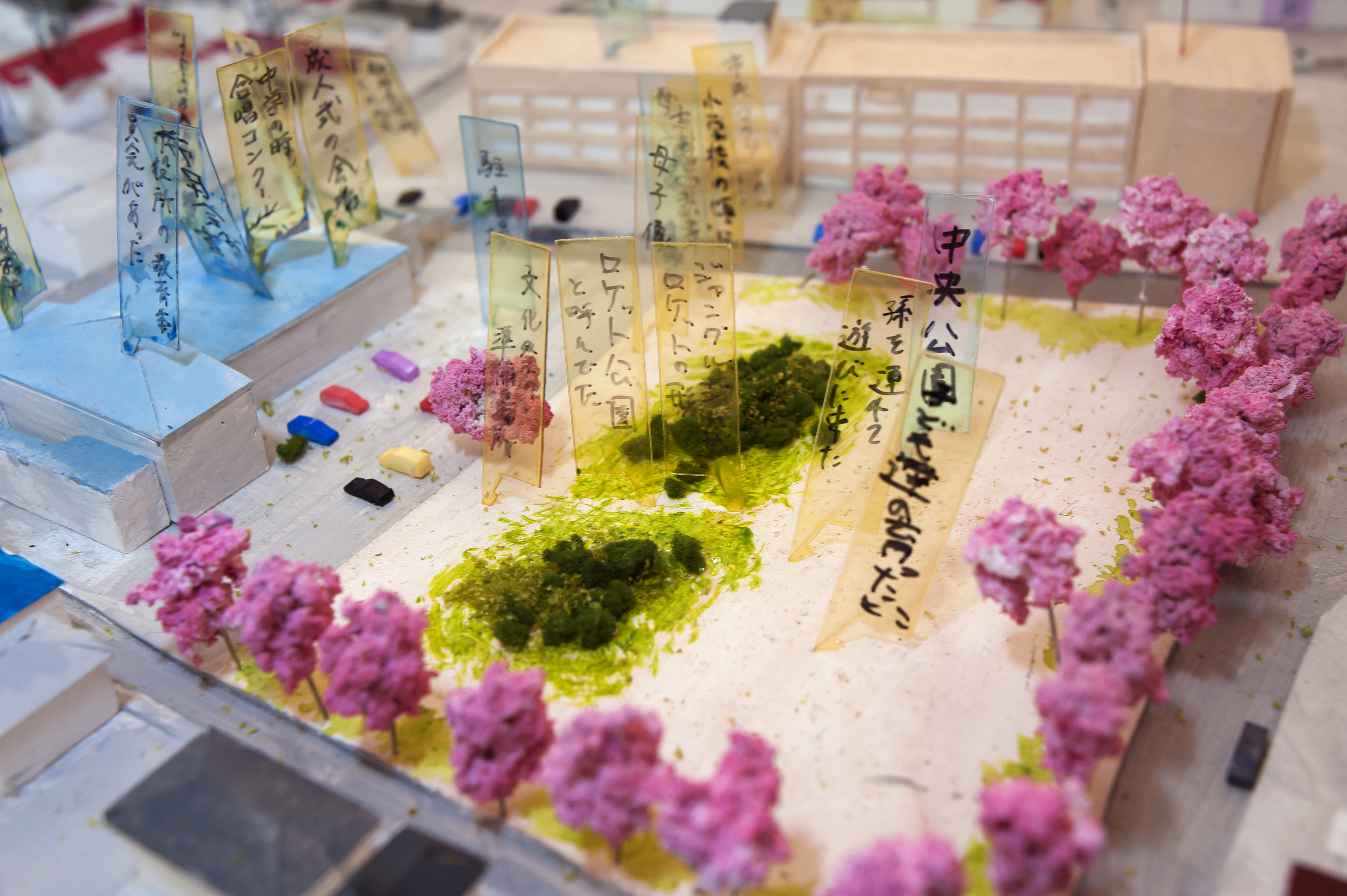
Figure 6: From the “Town of Memory” workshop in Rikuzentakata City, Iwate Prefecture, September 2013. Photo: Fujii Tatsuya. Courtesy of the Lost Homes Project.
As of July 2023, they have produced scale models for 65 areas and organized 70 workshops. The number of created models amounts to 500 pixels, representing 20% of the affected residential areas. Their aim is not to represent the impact of 3.11 itself but rather to use this project as a tool and method to collect and preserve memories of the disaster affected places. While the project was architectural at its inception, it has incorporated an ethnographic approach. It has also served as a tool for planning the recovery of communities and reconstruction of towns. Furthermore, the physical presence of scale models has helped assist grief work (Tsukihashi et al. Reference Tsukihashi, Tomobuchi and Akita2013).
Preserving memory through workshops and scale models
Since disasters disrupt social patterns, they present “an unpredictable context for the formation and maintenance of collective memories and identities because they are often forged in an atmosphere of existential threat” (Saul Reference Saul, Howard, Thompson, Waterton and Atha2018: 445). The ways that material objects can assist remembrance over time and space and engage communities thus become crucial. The act of preserving memory is possible through community storytelling (see Gkoliomyti and Tsukamoto Reference Gkoliomyti and Tsukamoto2021), and scale models assist in this process of sharing stories and memories. The “Town of Memory” workshops have allowed local residents to reconstruct their towns by verbalizing their embodied experience of their “lost homes” (Figs. 7 and 8). The project members asked them to share not only their predisaster memories but also the most difficult memories of their disaster experience. The residents would have likely experienced the various stages of loss and grief following such a life-changing event, which has in turn affected the interactions of the project members.
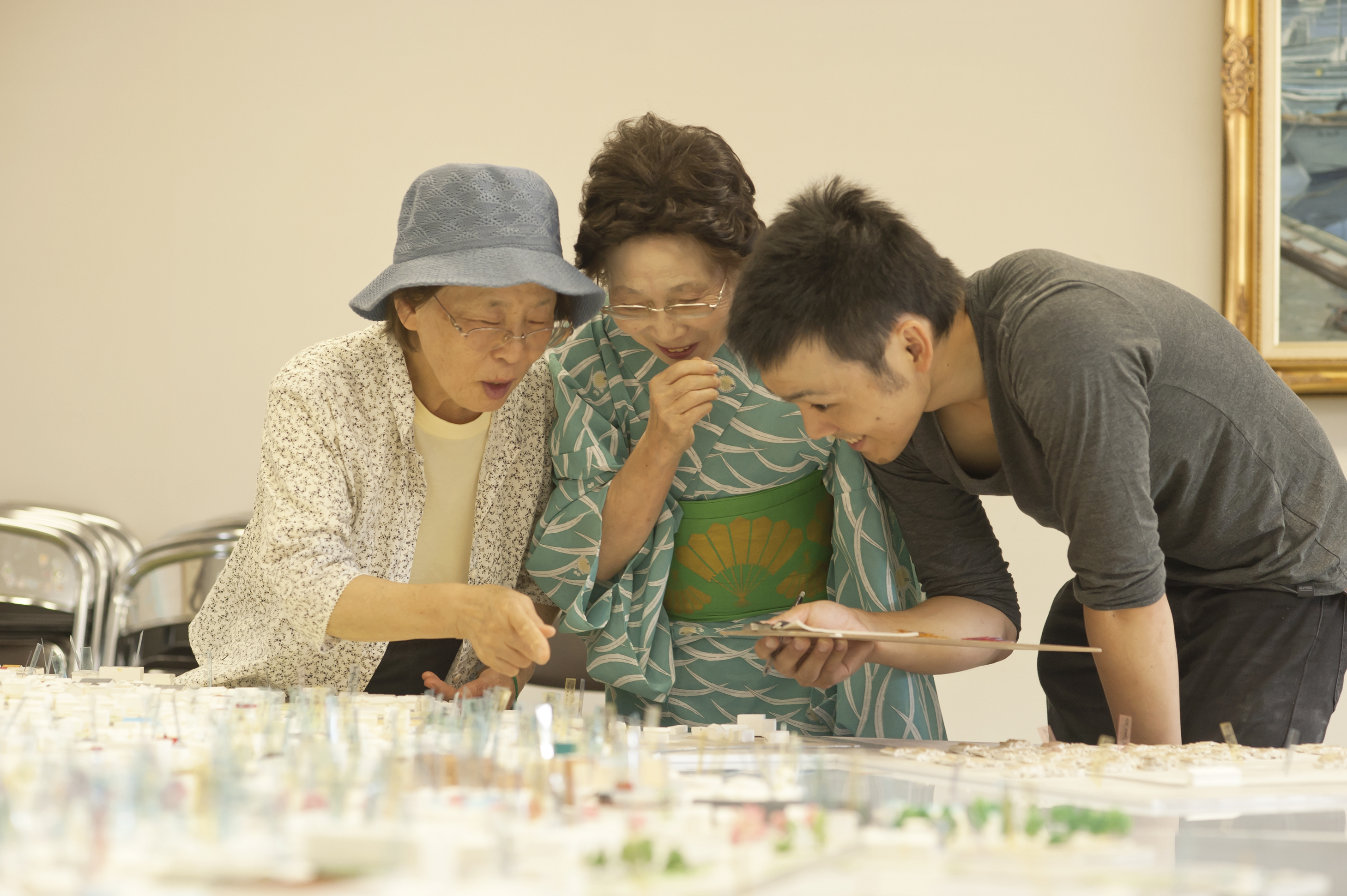
Figure 7: The “Town of Memory” workshop in Ōfunato City, Iwate Prefecture, August 2013. Photo: Fujii Tatsuya. Courtesy of the Lost Homes Project.
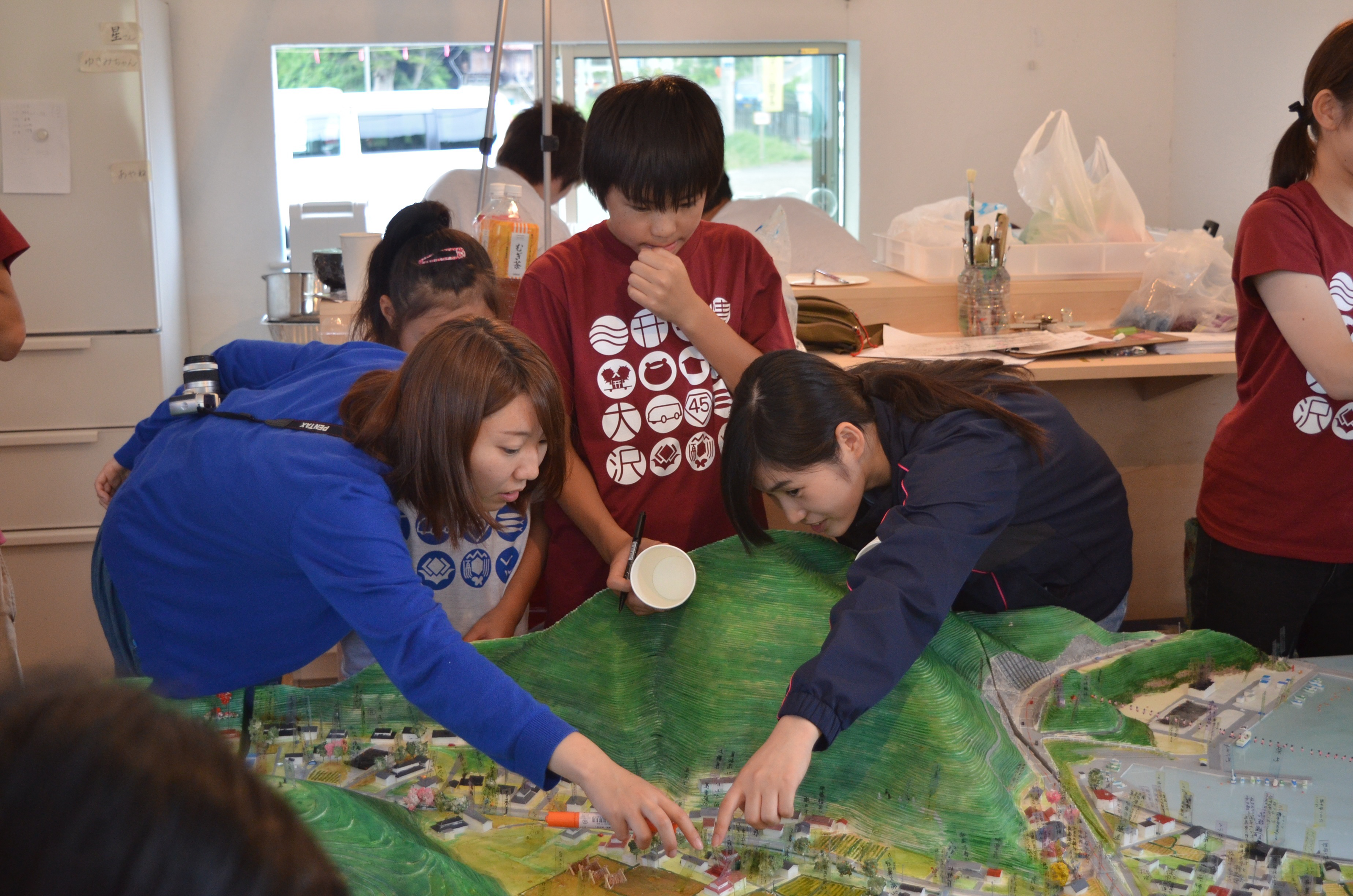
Figure 8: The “Town of Memory” workshop in Ōsawa District, Kesennuma City, Miyagi Prefecture, August 2014. Courtesy of the Lost Homes Project.
Isomura finds it hard to know how much to ask a disaster-affected person to share; willingness to participate and trauma varies from person to person. In the year after 3.11, on the whole, people shared memories about the hard days and months following the disasters. From 2 years onward, most speak about their predisaster memories. He considers that in that first year, the effects of the disasters were still deeply felt, and nobody could spare the emotional effort to think further back into the past. They also documented memories in particular towns that had once had special characteristics. For example, Namie Town’s Ōbori district in Fukushima was once known for its ceramics, so they often heard about ceramic craftwork from local residents. One thing was consistent across the board—people’s memories of their hometowns were overwhelmingly positive. They rarely heard anything negative (Conversation with Isomura, June 29, 2021). As Tsukihashi says, “a model that is immaculately white at the beginning of a workshop will become beautifully colorful, thanks to the countless memories and expressions of affection for the town shared by its residents. The diorama model thus transforms from a mere physical model into an archive of a place imbued with innumerable sentiments and records of the life of each resident who used to live there” (Tsukihashi Reference Tsukihashi and Nakamura2021a: 18).
Kōjō Saki, a project member, shared the view that the most important feature of this project has been dialogue, as it is used as a means of hearing the stories of local residents. Having a kind of “capacity for dialogue” is what enables the residents to want to share their feelings and memories with students, even on a first meeting. By “capacity for dialogue,” Kōjō means the ability to understand the experiences of others as if they were your own. She has never experienced a disaster nor felt that fear directly. Thinking from other people’s perspectives and applying them to yourself rather than treating those perspectives as completely alien to your own is an indispensable skill and attitude when taking on the Lost Homes work. The first Lost Homes project that Kōjō was involved with was outside Tohoku, and even outside Japan; it was a workshop in Yogyakarta, Indonesia in 2019. She realized that this skill was necessary in all contexts, within or outside Japan (Conversation with Kōjō, June 29, 2021).
The project has donated 48 models to the relevant towns, villages, groups, or memorial museums in Iwate, Miyagi, and Fukushima Prefectures, and the models are now used by them for exhibitions and disaster education. Some of the models are now on permanent display, for instance, at the ruins of 3.11 at Ukedo Elementary School in Namie Town, Fukushima and Arahama Elementary School in Sendai (Fig. 9). The project members continue to organize “Town of Memory” workshops, but those who have acquired the models have also started organizing exhibitions and running their own workshops. Seven models of the disaster-affected areas in Kesen DistrictFootnote 3 in Iwate and Miyagi Prefectures are now managed by the general incorporated association Tonarino, which operates in Rikuzentakata City, Iwate. Tonarino started as an emergency support organization established in 2011 under the name SAVE TAKATA, and the model of Ōfunato city shown at A Future for Memory was a loan from them. Their “Kesen Disaster and Memory of the Past” project has inherited these scale models and now utilizes them. Tonarino has been utilizing these models since 2015, and as some models are still colorless, the staff at Tonarino listen to predisaster memories and stories from local residents and paint the models together. In addition, they use them for disaster preparedness education (Tonarino and personal communication with Yamamoto Kenta of Tonarino, January 11, 2022). The scale model of Rikuzentakata is on permanent display in the city (Fig. 10).
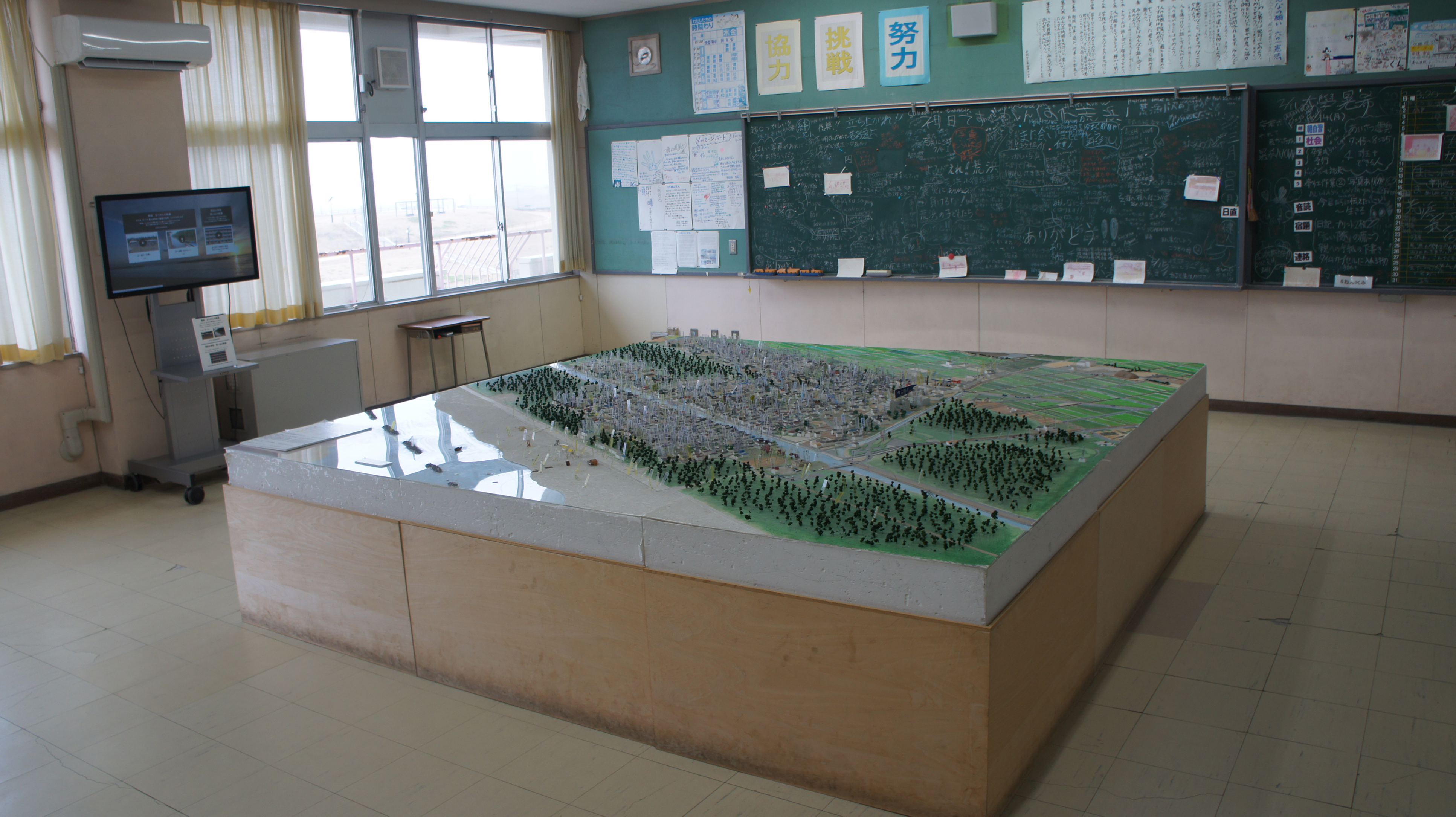
Figure 9: The scale model on display at the Arahama Elementary School in Sendai City, January 2023. Photo: Fuyubi Nakamura.
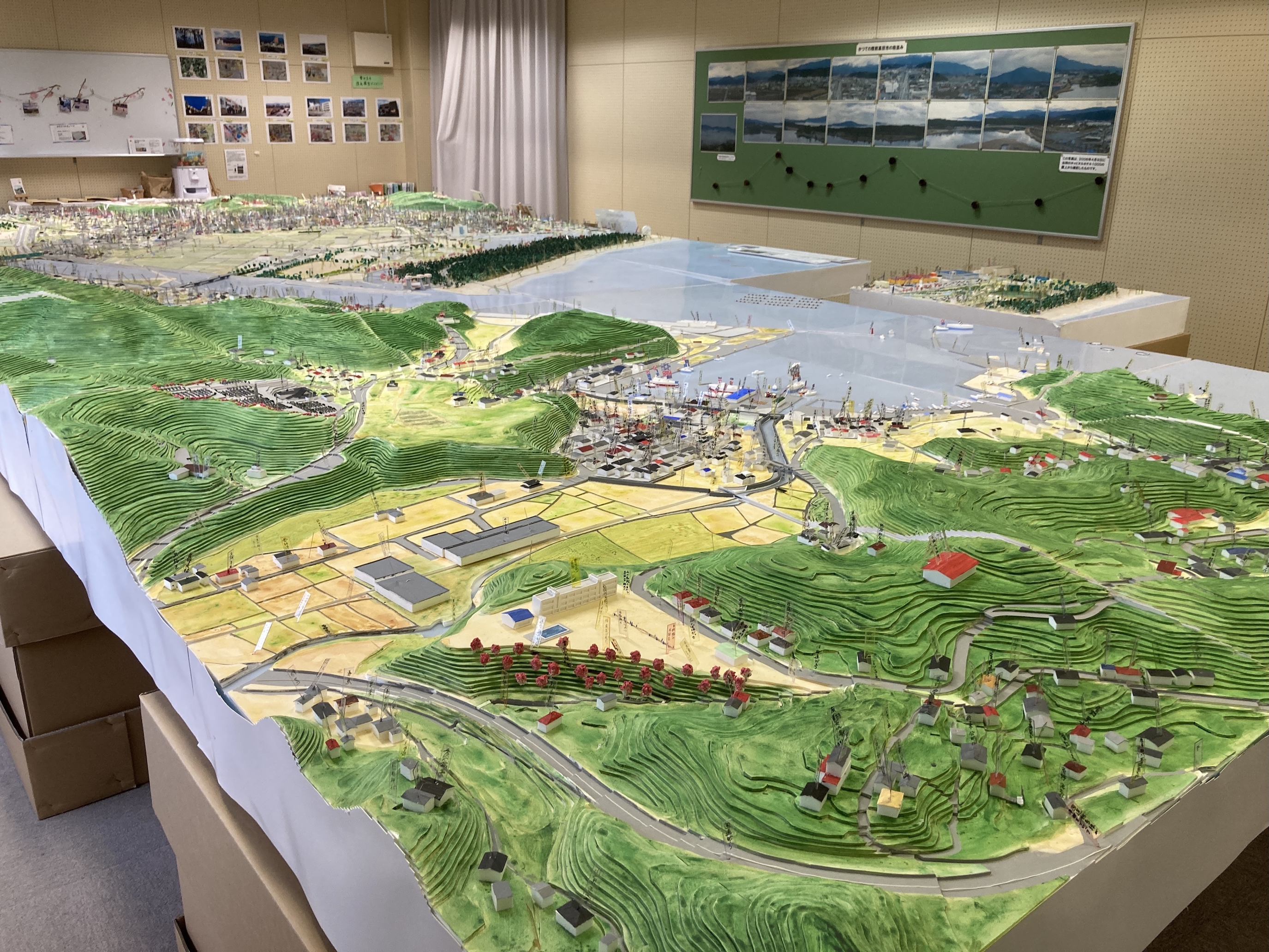
Figure 10: The scale model of Rikuzentakata City on permanent display at the Rikuzentakata Global Campus, operated by Iwate University and Rikkyo University. Photo: Fuyubi Nakamura, January 2022.
Kōjō participated in the Town of Memory workshop in December 2020 in Tomioka Town, Fukushima Prefecture, which had been designated as the “difficult-to-return” zone until March 2020. Many residents of Tomioka, along with several other towns in Fukushima, have not been able to return home. For them, the long absence affects their ability to preserve memories of their hometown. The Tomioka model had already been created by her senior colleagues in 2015, and they held a workshop outside Tomioka to color it then (Tsukihashi et al. Reference Tsukihashi, Taguchi, Isomura and Tomobuchi2022). This time, they went to Tomioka’s reopened elementary and middle schools, performing the workshop with the students as a kind of memory-based classroom activity. They made this change because the members working on the project realized that these students were not old enough at the time of the disasters to have a clear picture of their own hometown. Their goal with this project was to show those children what their town once looked like, that it was a place full of memory. They felt that in this way the project could not only memorialize but also teach. Usually, the workshops are performed in such a way that the project members take the position of the students, learning from the local residents. However, in the case of these school interventions, they felt as if they were teachers, conferring onto children what they had learned in the process of constructing the model. This was considered to be an interesting role reversal (Conversation with Kōjō, May 5, 2021).
For collaborative community building
The Lost Homes project also provoked and prompted some communities to discuss town planning and the future of their community. The local residents became active agents in the recovery process by participating in this project. Thanks to the two workshops held at the temporary housing in Shishiori district and Ōsawa district, Kesennuma in September and October 2011, the Kesennuma Mirai Project team in Ōsawa began to support the relocation of communities and reconstruction of certain areas, in collaboration with several universities. One of the teams, Ōsawa mirai shūkai (the future Ōsawa team), discussed the plans for relocating to higher ground, and another, Ōsawa machizukuri kaigi (Ōsawa team for community building), regularly held meetings until 2018 to discuss the reconstruction of their town, using their scale models. The former members of these teams have remained active in the recovery process. Similarly, Ōshima no mirai wo kangaeru-kai (the future of Ōshima team) was one such group that organized a series of workshops and talks; discussions included the potential building of a sea wall and housing in the area, using scale models to visualize the plans (Tajima et al. Reference Tajima, Isomura, Tomobuchi and Tsukihashi2022) (Fig. 11).
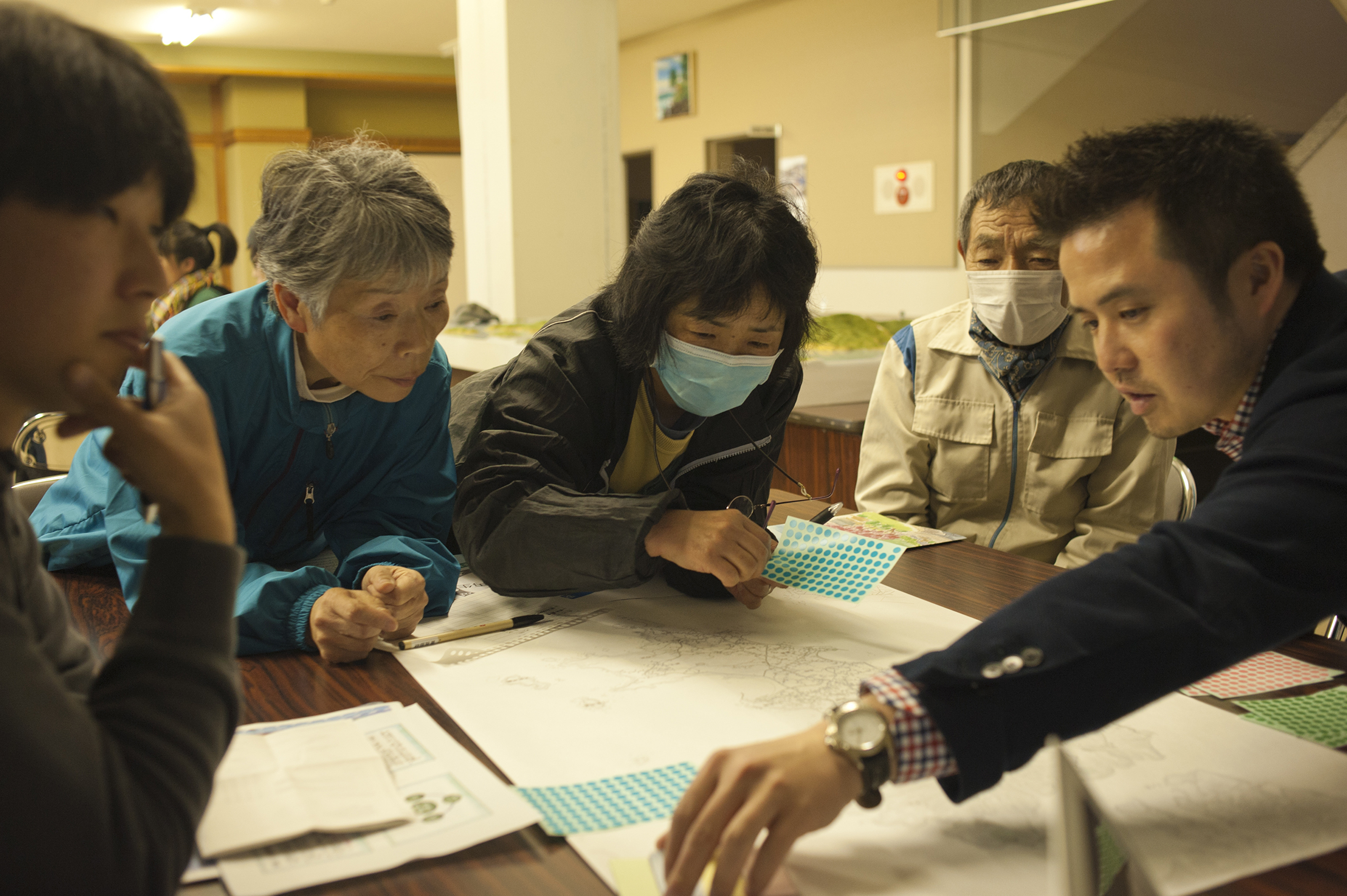
Figure 11: Ōshima no mirai wo kangaeru-kai meeting no. 5, May 12, 2013. Photo: Fujii Tatsuya. Courtesy of the Lost Homes Project.
Public events
The first public event for this project was a gallery reading with a display of the scale model of Karakuwa-Ōsawa area in Kesennuma, organized as part of Yokohama Triennale on October 14, 2011 (Fig. 12). The event derived from the Town of Memory workshops that were held in the city in August 2011. It took the form of a theatrical piece produced by Takao Takashi of Tokyo National University of the Arts, in collaboration with various other initiatives, including Za-Koenji Creative Theatre Academy, as well as those who organized the workshops. The actors gathered around the scale model and read out memories and testimonies collected during the workshops. Reading events were also held in Kesennuma in September 2012, at the end of the series of workshops. The memories of the Naiwan in Kesennuma that were shared at reading events include the following (Lost Homes Project 2014), which demonstrates how local residents were prompted to talk about their home using a Lost Homes scale model:
Reader: You can’t help but search for your house, you know?
Reader: In the old days, the port was buzzing with departures and arrivals. Walking along the port deck you’d hear, “Grab the rope!” and find yourself helping out a perfect stranger.
Reader: That everyone would die had simply never crossed my mind.
Reader: I was trying to get home after the earthquake. Suddenly, from some distance, I saw a cloud of dust float into the sky. If I had been at home, I would have been crushed.
Reader: We were about to attend our end-of-day homeroom meeting at Kesennuma Elementary School. Our teacher called for us to get under the desks.
Reader: Our vantage point from Anba Mountain was a good one—too good. We watched the tsunami plow through Kesennuma in painful detail.
Reader: The front of the city hall was buried in rubble. Our debris removal would start there. Within a month or so, some shops around the city hall reopened. We felt the urge to do business again. We started an open-air stall. More businesspeople, even those who had resolved to never return, felt inspired to rebuild their shops. This was the birth of Murasaki Market.
Reader: A house built over 80 years ago, in 1930, folded over in seconds. It’s been rendered perfectly in the scale model. Of course, it will never be the same, but I find some comfort looking at it in miniature.
Reader: I’ve lived in Naiwan—the inner bay area—all my life, so of course I’d like to continue living by the sea. The sea rolling, the gulls flying, the boats coming into harbor…. These images have been indelibly written into my body.
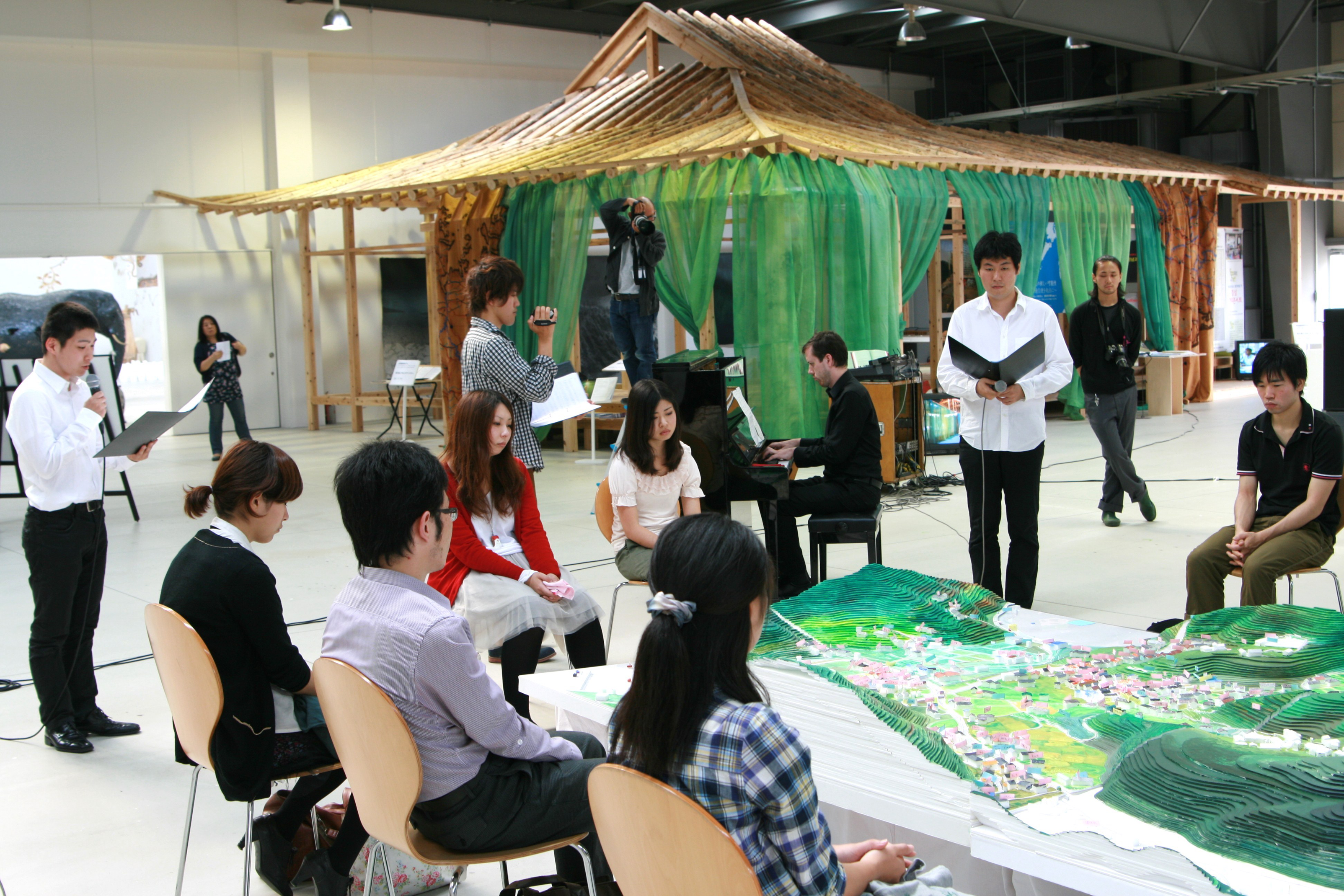
Figure 12: The gallery reading event as part of Yokohama Triennale on October 14, 2011. Courtesy of the Lost Homes Project.
The project’s first exhibition, entitled 311: Lost Homes was held from November to December 2011 at TOTO Gallery・Ma in Tokyo—a gallery specializing in architecture (Fig. 13). It was supervised by architect Naito Hiroshi, emeritus professor at Tokyo University and graphic designer Hara Kenya, professor at Musashino Art University. The exhibition featured 14 models made by 13 different university labs; they were mostly white but some were partially painted. Since then, many exhibits on various scales have been organized around Japan, especially in Tohoku (Fig. 14), as well as outside Japan. Locations include Australia, Canada, Germany, Philippines, Taiwan, the UK, and the USA (Fig. 15).
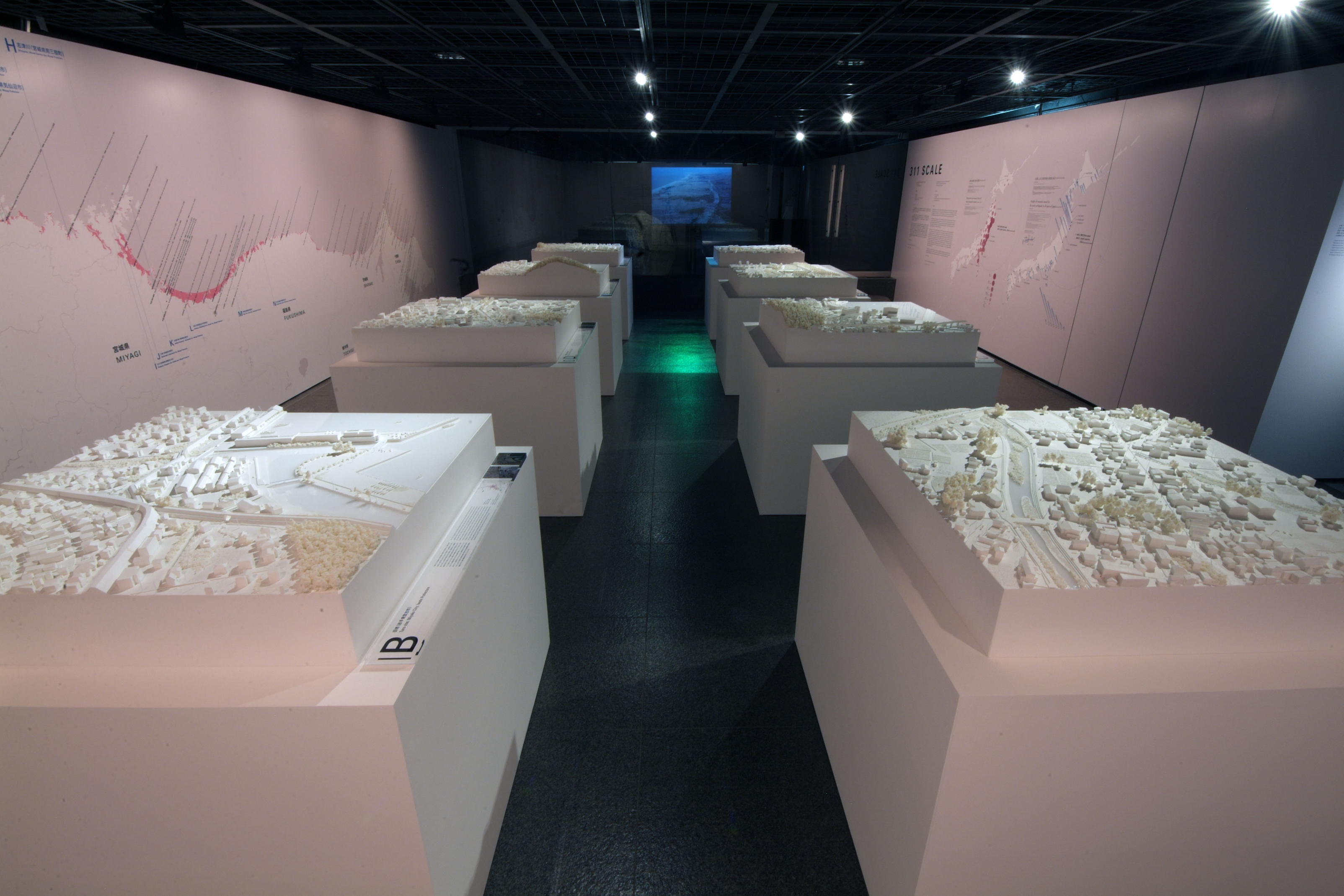
Figure 13: 311: Lost Homes at TOTO Gallery・Ma in Tokyo, November 2011. Photo: TOTO Gallery・Ma. Courtesy of the Lost Homes Project.
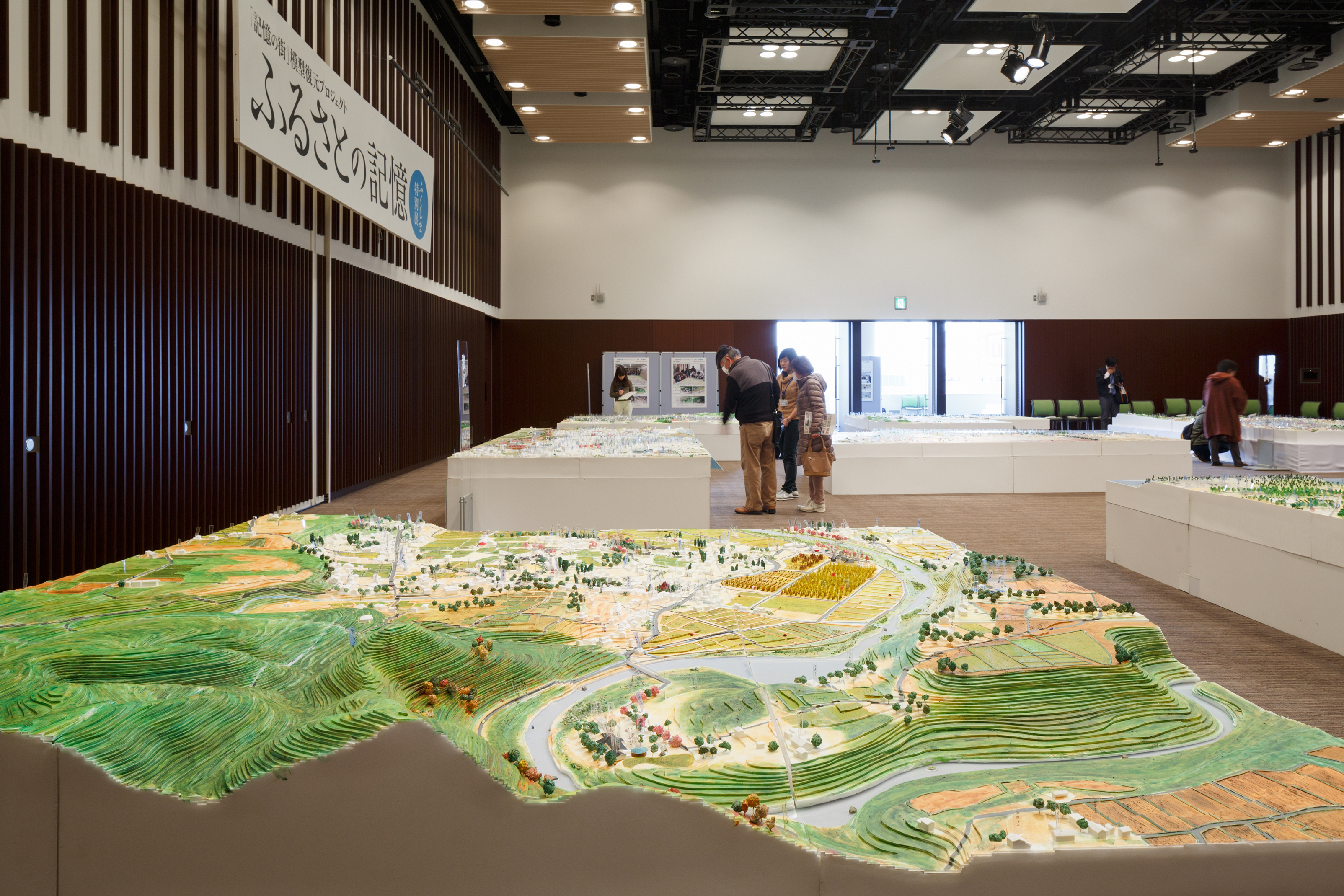
Figure 14: The Furusato no kioku (memory of hometown): Fukushima exhibition, Iwaki City, Fukushima Prefecture. February–March 2016. Photo: Ōta Takumi. Courtesy of the Lost Homes Project.
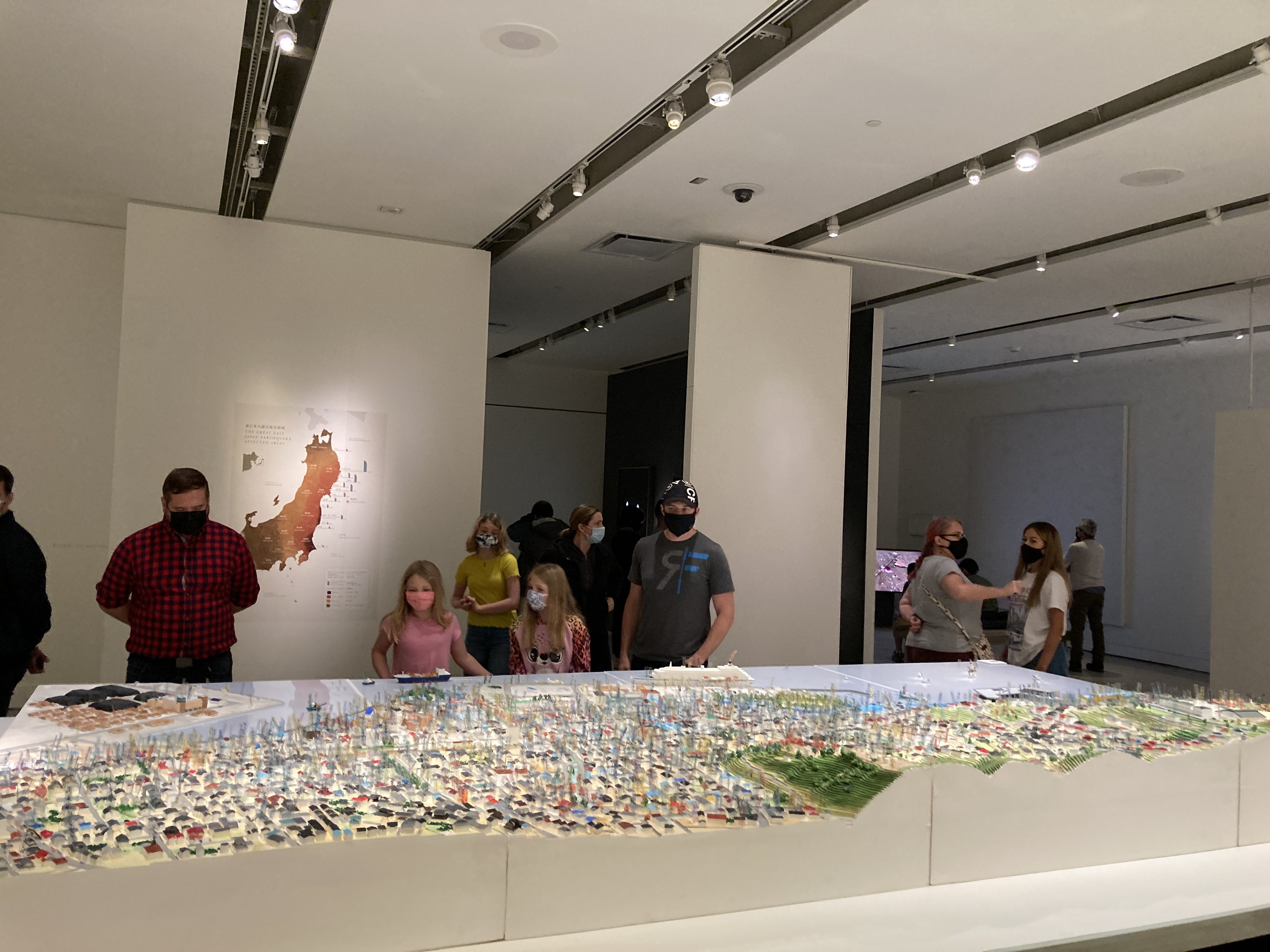
Figure 15: A Future for Memory at MOA, August 2021. Photo: Fuyubi Nakamura. Courtesy of Museum of Anthropology at UBC, Vancouver.
Collaborative events
On May 5, 2021, I had a long conversation with two project members, Isomura Kazuki and Kōjō Saki. Apart from asking them to talk about the project, I heard about their personal experiences. This conversation was followed by a public online event around the Lost Homes project during my exhibition at MOA on June 29, 2021. For the event, I invited Isomura and Kōjō, as well as local architects and designers Arthur Leung and Katherine Ann Co, both recent graduates of UBC’s School of Architecture and Landscape Architecture (SALA). In addition, the talk included a commentary by Mari Fujita, a designer and educator also from the SALA. The event itself was a collaborative effort to consider the significance of the Lost Homes project and how their models can be used creatively.
Co finds that inviting locals to share stories over the model is an important aspect of the design process, as it brings people together in a tactile, interactive, and therefore cathartic activity. She considers that it is as important as the resulting colored model, and the final model is the byproduct of that engagement. Co asked the project members what their expectations and hopes were for new viewers. Kōjō responded that one of the main reasons they engaged in these workshops was to build bridges in intergenerational and interregional communication. She used herself as an example, since through the models she experienced memories of places she never knew about, and in comparing model locations with how they are today, she gained specific knowledge. She hopes that children who did not experience the disasters, as well as other members of the public who come to see the models, will gain new perspectives on these regions and connect them to their own experiences. In this way, she hopes the models will motivate people to deepen their relations with their own regions.
Leung wondered if residents felt the urge to reconstruct their homes at their old sites or if the project provided closure for those who moved on to other locations. Isomura replied that they have seen many different cases, and that the situation for each individual has been different. He did suggest that the desire to return and rebuild seemed to fade the longer people were made to stay away and that this was the case even in those who had once expressed a clear determination to return. The areas that had started recovery and community development programs—prompted by the workshops held soon after the disaster—saw more people rebuilding their homes than was the case in other areas. The project would arguably have had this impact on more areas if they had managed to organize workshops there within the small postdisaster window. Whether people returned to their original locations or were relocated elsewhere, whether they lost their hometown or not, the documentation carried out by the Lost Homes project was designed to enable people to freely look back to predisaster days whenever they felt it was time. Their job has been to try to prevent a complete break with that past, to gently maintain whatever link was comfortable.
Co stated that she saw the scale model as a rhetorical tool within architecture with which to aid in the imagining of unbuilt places for the future. The project recreates built places from the past, and beyond this goal, the models retain knowledge for the future by safekeeping the sentiments and memories of another time. She wondered aloud if the social engagement aspect of the model felt like a disruption to the usual processes of model-making. Kōjō agreed that these models, now used to preserve knowledge for future audiences, could find applications outside architectural offices and that the most important aspect of the models was knowing what kind of activities could or should be taken up after each model was complete. Unlike the models commonly built by architecture offices, which “represent the finished product,” models made for this project were more like “mock-ups.” The unending process of adding color to the white surface, of pitching tiny flags to indicate sites of memory, of perfectly reproducing a location’s tiniest details—make their models unlike any others. All this modification is part of an effort to deepen project participants’ understanding of a specific location. Kōjō hopes more children will exhibit an interest in diverse methods of memory preservation, for example, other than the norm of photographs and books, and that they themselves will want to play an active role in creating a future for their communities.
Co finds the new approach to preemptively preparing for areas at risk by disaster is intriguing. Although it can be seen as ominous to imagine one’s own city model being built owing to an approaching calamity, it is a reminder of the impermanence of everything, including our own cities, which we often assume to be unbreakable. This new approach might also inadvertently (and beneficially) bring attention to places at risk and places that need help. She wanted to know if they thought that this approach could become a political tool to bring awareness to cities or regions that are underdeveloped, forgotten, or unprotected from disasters or if it was solely a tool of remembrance. Isomura responded that the models could certainly be used to draw attention to at-risk locations, but that he did not view that as their central role. Hazard maps, for example, already exist, and models require a lot of time and money to make; therefore, they are inefficient in terms of risk identification compared with existing tools. He described the models as most suited to the narrow field of disaster preparedness. For example, a lot was learned about what makes a town unique during the model-based “Town of Memory” workshops, and these models shone when the group was able to connect knowledge about unique features to practical applications in disaster preparedness. However, the models still largely remain a memorial tool, and these new practical plans have yet to be fully implemented.
Fujita commented on the project by sharing her sentiments: she was immediately struck by how vital the city of Ōfunato was—that it was full of memory. As a viewer, there is delight in discovering a place with richly layered depictions of the physical aspects—what color were the roofs? On which streets were the cherry trees about to bloom? The ephemeral aspects of a town evoke a place rich and bursting with lived experience. She commented on how the colorful model make the town feel so real and so alive, that for a moment she could forget that it had been swept away and that now it only exists materialized in this scale model form, as a memory. She suggested that people often think of scale models as simulacra—representations of reality—but that she felt the Lost Homes models created a representation of a town that had not existed before; she proposed that what makes the models unique is that they were born from so many voices and were produced through a collaborative process. Fujita observed that it is an ideal of urban design that so many perspectives and voices might be produced and held in a space, but this ideal is never realized in the non-scale-model world. She described finding the notion of materializing, of building memory, fascinating—and the fact that the project was taken on by a team of architecture students led by their professor made her think about the skills that they are building in the future generation of architects. As a professor of architecture herself, she feels obligated to build a curriculum that covers all the skills that have been deemed vital for the profession of architecture. The last time she checked, building memory was not one of these vital skills, but this project makes her wonder—should it be? (Conversation with Kōjō, Isomura, Co, Leung and Fujita, June 29, 2021).
Beyond 3.11
The Lost Homes project has also created scale models and held workshops in different disaster contexts and locations, such as in Indonesia and Kobe. Kōjō participated in the workshop, as above, in Indonesia in 2019. The workshop was hosted by the Department of Architecture and Planning at Universitas Gadjah Mada (Gadjah Mada University). Students at Gadjah Mada made a white scale model and listened to the stories of the devastated areas while Kobe university students painted and created miniature objects. The former residents of Bakalan village who had been affected by the 2010 volcanic eruption of Mount Merapi, who were now relocated elsewhere, participated in this “Town of Memory” workshop. As the workshop was conducted in Indonesian, the Kobe university students were not able to take part in the listening process, but this workshop proved the applicability and effectiveness of their scale models—as a tool to collect and preserve memories—in other contexts (Lost Homes Project) (Figs. 16 and 17).
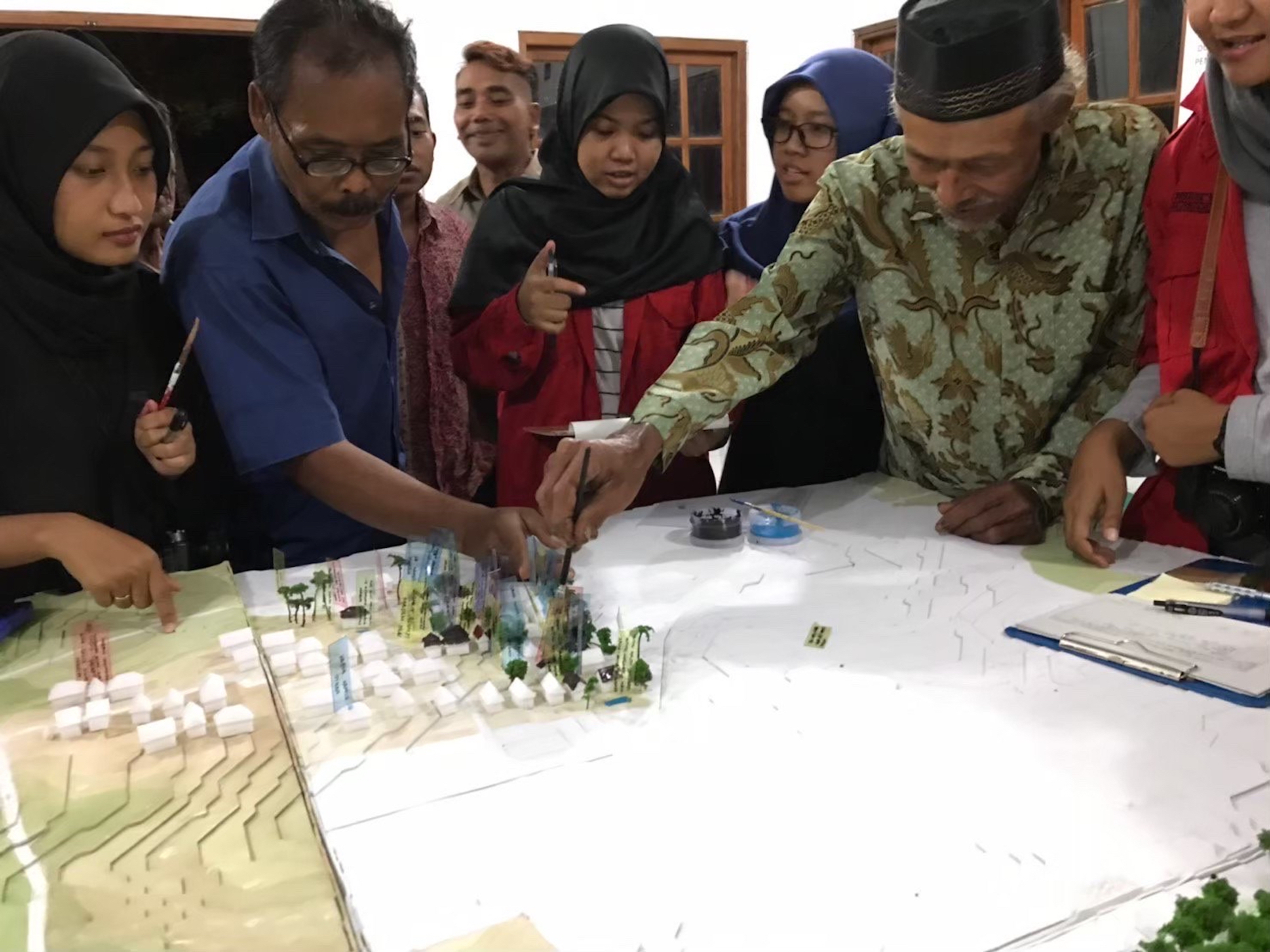
Figure 16: The “Town of Memory” workshop at Gadjah Mada University, Indonesia, September 2019. Photo: Imazu Kanchi. Courtesy of the Lost Homes Project.

Figure 17: Memory flags in Indonesian on the scale model of Bakalan village, Indonesia, 2019. Photo: Imazu Kanchi. Courtesy of the Lost Homes Project.
As the Lost Homes project started after 3.11, no scale model had been made of the affected areas of the 1995 Kobe earthquake, but the project participants began making models of Nagata, Sannomiya, and Rokkōmichi in Kobe in 2012 and organized a first “Town of Memory” workshop in Kobe at the Making as Living exhibit in 2013. In 2021 and 2022 they also organized workshops in Rokkōmichi near Kobe University, which is one of the most visually transformed areas after the reconstruction process in Kobe. As over 25 years had already passed since the earthquake, they also displayed predisaster photos alongside the model to assist the participants in recalling their memories of the town. While participant memories were less clear, they still managed to color the model and to add miniature objects and memory flags. The model is now displayed in the lobby at the Nada Library in Kobe.
Postdisaster creativity
There was a postdisaster “gold rush” (Gomez and Hart Reference Gomez and Hart2013) soon after 3.11; many artists and other creative practitioners, as well as researchers, seeing an opportunity for their work, went to the disaster-affected region. While arguably these visitors had good intentions, it is notable that only a small number engaged with local communities for an extended period of time or continue to be involved with communities in the area. Furthermore, many artists went to the area and created works that they benefited from, and some never returned. Various local museum curators are critical of these artists. Futakami Fumihiko, the curator at the Minamisōma City Museum, for example, commented that a larger influx of artists came to Minamisōma after 3.11, but “many came and left. There was no shortage of boastful artists.” He approximated some of the exclamations made by artists visiting the area, such as “‘Look, I made this in Fukushima. Isn’t it amazing?’ or, ‘I ventured into the restricted zones to make this work.’” Adding that this attitude was not limited to Minamisōma, he stated bluntly that, “we had no time for such artists. We were seeking help, essentially” (Futakami Reference Futakami2021b). Futakami did work with some artists he felt had respect for the town, such as Katagiri Atsunobu and Okabe Masao, both of whom also participated in A Future for Memory (see Nakamura Reference Nakamura2021). While he had never worked with artists prior to the disaster, as he specializes in local history, he believes artists have the power to communicate and is not dismissive of the interest in artists coming to his town (Futakami Reference Futakami and Nakamura2021a). However, as the Lost Homes project indicates, those who responded to the disaster creatively were not necessarily artists or did not consider themselves creative practitioners.
The making as living exhibition in the context of 3.11
Is creativity necessary for disaster recovery? Cameron et al. discuss postdisaster creativity in the context of the 2011 Christchurch Earthquake that occurred a month before 3.11. They argue that “the need to adapt to the postdisaster environment, and to compensate for what has been altered or lost, generates a different form of creativity,” and they see disaster creativity as often driven by “a desire to perform ‘meaningful work’ when opportunities to do so are plentiful” (Reference Cameron, Montgomery, Moore and Stewart2018: 11). A series of exhibitions entitled Making as Living (つくることが生きること): The Exhibition of the Great East Japan Earthquake Regeneration Support Action Project, organized by the WA WA Project (わわプロジェクト) in the aftermath of 3.11, are about the act of making or being creative as integral to the recovery process. Artist Nakamura Masato initiated the WA WA Project: Social Creative Platform for Opportunity in April 2011 in cooperation with 3331 Arts Chiyoda in Tokyo, an alternative art space in an old school building where he was the director until it closed on March 15, 2023.
This project aimed to connect various types of people in the areas affected by 3.11 who had responded creatively to the disaster situation and who had engaged in the recovery process with those outside the disaster region. The creators of this project were not all artists, designers, or architects, and many were residents and volunteers from and outside Tohoku. In other words, the project prompted the “ordinary citizens who were converted into creative agents to influence their own everyday reality” (Woo Reference Woo2019: 66). The project name WA WA derives from the Japanese sound, わ (wa), which can be written variously as 和, 輪, 環, and 倭. All of these indicate types of relationality, connectivity or harmony. Wa also refers to “I” or myself in the Tohoku dialect. Collectively, many “I”s or wa make up the “we,” who together rebuild affected areas (WA WA Project 2012). Nakamura sees the act of making as integral to “empowering society…people lacking creativity fail to invent new ideas and skills outside the box in times of crisis…It is not some abstract ‘art’ for art’s sake that is needed, but a broad creative arena that will serve to revitalize society and make it more self-reliant and resilient in a world that is facing ever more dynamic socioeconomic and environmental change” (quoted in Dimmer, Reference Dimmer2016: 212–213). WA WA started organizing a series of events in April 2011, while also offering spaces at 3331 Arts Chiyoda for anyone who was involved with the recovery process. Fuji Film, for instance, offered a series of sessions there to clean recovered photos.
The first Making as Living was held at the Gwangju Design Biennale in September 2011, followed by another at Art Sonje Center in February 2012, both in South Korea. Chung Shan Creative Hub in Taiwan hosted their exhibition from March to April 2012, and their first exhibition in Japan was held at 3331 Arts Chiyoda during March 2012. These three exhibits, held in 2012 at different venues, featured works and projects by 70 Tohoku residents, artists, architects, designers, activists, nonprofit organizations, schools, universities, companies, and newspapers, among others, including Archi+Aid. The exhibition was a large collaborative project, involving many people, but especially Tohoku leaders and residents. A smaller exhibit was also held in Niigata Prefecture in November 2012, and Kiito in Kobe hosted another exhibit in January 2013. The Kobe exhibit featured the Lost Homes scale models from Kobe and Tohoku and opened on January 17 to coincide with the 18th anniversary of the 1995 Kobe Earthquake. This exhibit attempted to connect and consider the aftermath of these two major earthquakes; for instance, photographs of the Kobe Earthquake by Miyamoto Ryūji and of the Great East Japan Earthquake by Hatakeyama Naoya were displayed. Both photographers participated in the Japanese pavilion at the Venice Biennale of Architecture, as will be discussed below. Their last large exhibit was held at 3331 Arts Chiyoda during March 2013, which I visited with a friend from Tohoku. Making as Living was about collaborative and relational creativity—connecting people through creative practices. Woo discusses the WA WA project in the context of relational aesthetics “in the sense that it promotes the production of new social bonds” but at the same time recognizes that the project was “not designed to last…The participants of the WAWA Project are united—with much hesitance and a keen awareness of their vulnerability—to be dispersed. When their goal is achieved, the reasons for their unity will disappear, and art will no longer be necessary” (Woo Reference Woo2019: 66–67).
Venice Biennales of Architecture: 1996 and 2012
The Lost Homes project is one of many projects related to 3.11 conducted by architects. The Japanese pavilion at the Venice Biennale of Architecture in both 1996 and 2012 focused on the role of architecture in the aftermath of a major disaster; the 1995 Hanshin-Awaji (Kobe) Earthquake and the 2011 Great East Japan Earthquake, respectively.Footnote 4 The 1996 exhibit commissioned by architect Isozaki Arata was named Fractures (亀裂), in response to the 1995 Earthquake. The 2012 show commissioned by architect Toyo ItoFootnote 5 was entitled Architecture. Possible here? Home-for-All (ここ、建築は、可能か), in response to 3.11. The process of making the Home-for-All (みんなの家) in Rikuzentakata City, Iwate was also featured in Venice.Footnote 6 Ito’s exhibition panel expressed how following 3.11, collaboration became key in their architectural practice:
“Towns washed away by the March 2011 tsunami, people who lost their homes, friends, and family. What can architecture do for them?
Since the advent of the modern era, architects have held individuality as the highest value, distinctive originality as the very basis of their profession. Ultimately, however, are not most ‘architectural statements’ merely egotistical gestures on the part of the architect? Why and for whom are we architects making architecture?
We built a small communal ‘Home-for-All’ in a disaster area as an attempt to reconsider the basic ‘by oneself, for oneself’ stance of the architect. A Home-for-All to reawaken, embrace, and engage memories of lost homes. A place for people in search of a home to gather, share meals and support, and thus rekindle a sense of community.
We made this house without any barrier between ‘professional’ and ‘amateur,’ no distinction between ‘builder’ and ‘resident.’ Every step of the process was done together with local people; we planned together, thinking things through as we created, creating things as we thought. Builders became residents, residents became builders.
…This exhibit documenting the entire process behind making our ‘Home-for-All’. We invite all visitors to ask yourselves: ‘Just what is architecture?’ [sic]” (Ito Reference Ito2012).
A total of 17 “Homes-for-All” were created between 2012 and 2017 across Tohoku. The Home-for-All project also built homes in Kumamoto Prefecture, following the 2012 Kumamoto wide-area flooding disaster and the 2016 Kumamoto Earthquakes. They continue to organize events to this day and have recently launched archival videos of their project Home-for-All in May 2023. Can these communal houses be seen as results of relational creativity? (See Ito et al. Reference Ito, Inui, Fujimoto, Hirata and Hatakeyama2012).
Conclusions
The implications for creative practices are significant but so is the potential of such practices to operate on levels of significance that language is fumbling toward but may never reach. Can creative forms of expression speak for themselves? In certain instances, they can be more effective than scholarly analysis (see Nakamura et al. Reference Nakamura, Krischer, Perkins, Nakamura, Krischer and Perkins2013). As I discuss creative works produced by a diverse range of interpersonal connections, I want them to speak for themselves, as I believe in the power of relational creativity.
This article has focused on the affective dimensions of creative disaster responses, especially around preserving memory. With its focus on relational creativity, it demonstrates how creative practitioners came together through the Lost Homes project or other exhibitions such as Making as Living and A Future for Memory. The creative practitioners involved in postdisaster recovery are diverse—ranging from residents of the affected areas, students, and professors to artists, architects, and curators. Their activities have provoked others in society to create a place for reflection and for a shared sense of hope. In addition to the recovery process, they have in turn prompted further activities, such as exhibitions and other public events. Exhibitions are always collaborative projects, and they have played a major role in mobilizing and disseminating the Lost Homes project. By curating a collaborative exhibition that featured their work in Canada, I also became implicated in the process. The “Lost Homes” Scale Model Restoration Project embraces collaborative and relational creativity as a way not only to preserve memories but also to think about the future of memories and towns. It has also provided a tool for community building, town planning, and grief work. This project has offered a place to share and to create in the aftermath of 3.11, demonstrating how creativity can be used to induce and preserve a sense of place, to heal and rebuild communities after disaster.
Acknowledgements
I owe a great deal of gratitude to members of the Lost Homes Project, especially Tsukihashi Osamu, Isomura Kazuki, and Kōjō Saki. The conversation with Isomura and Kōjō in Japanese was translated into English by Josh Trichilo, a PhD student at York University, Canada, and the translation was revised and edited by the author for clarity. The author’s A Future for Memory project has been funded by the Social Sciences and Humanities Research Council of Canada, the Japan Foundation, the Museum of Anthropology, the Centre for Japanese Research at the University of British Columbia (UBC), and UBC’s Hampton Fund Research Grant.
Financial support
This research received no specific grant funding form any funding agency, commercial or not-for-profit sectors.
Competing interests
The author has no competing interests to declare.
Author Biography
Fuyubi Nakamura is a socio-cultural anthropologist and curator trained at Oxford. She has a joint position with the Department of Asian Studies and the Museum of Anthropology at the University of British Columbia, Canada. Her research through exhibition curation as public scholarship includes Traces of Words: Art and Calligraphy from Asia (2017) and A Future for Memory: Art and Life after the Great East Japan Earthquake (2021), the recipients of the 2018 Canadian Museum Association Award of Outstanding Achievement in Research–Art Category and the 2022 Michael M. Ames Prize for Innovative Museum Anthropology, respectively.



















